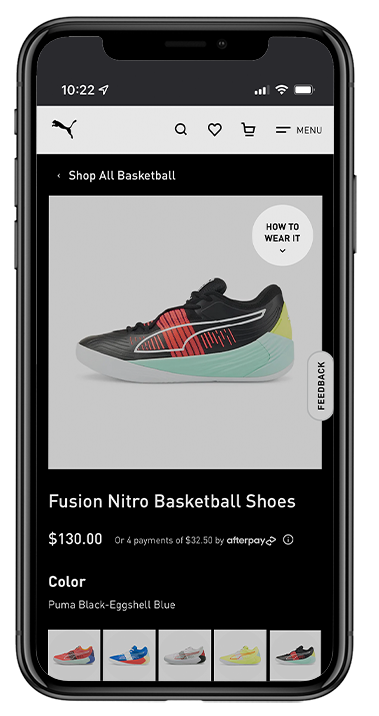The momentum behind composable (or, if you prefer, agile or headless) Content Management Systems (CMS) continues gaining steam as brands realize improvements in efficiency, innovation, and digital experience performance. At the same time, customer demand for visual-first experiences seems insatiable. So brands find themselves trying to juggle creating numerous media-rich experiences for every possible digital channel, while ensuring everything performs at lightning speed. With the right technology in place — in this case, a composable CMS combined with a dynamic media solution — brands need never sacrifice volume and immersiveness for performance when it comes to creating unique visual experiences.
Combining a dynamic media solution with a composable CMS improves brands’ ability to deliver visual experiences across channels quickly, regardless of whether that channel is a website or mobile app or perhaps a Single Page Application (SPA) or Progressive Web App (PWA). Content experiences created for these different touchpoints must be highly optimized. Pairing a composable CMS with a dynamic media solution that’s designed to automatically transform and optimize imagery, video, and other cutting edge formats, enables brands to create high-performing and visual experiences everywhere, which improves customer engagement and conversions.
‘Yesterday, please.’ How often is that the answer to the question, “How soon do you need this?”? As consumer demand for more visual experiences increases, so too does the pressure to deliver projects and experiences faster. The pace? Unrelenting. The expectations? High. Deliver more visual experiences, in more places, faster —and, by the way, make them beautiful.
Headless CMS plus a composable Media Experience Cloud (MXC) ensures that all teams working on customer experiences can do so in tandem using the tool of their choice without slowing each other down. For example:
- Developers can create mobile apps or SPAs in their preferred language without learning marketing tools or having to go back to designers for every possible variation of an image or video
- Marketers and designers can create the asset once (increasing their own efficiency) without having to rely on developers to dynamically adjust the asset’s shape, size and frame for each unique channel
While brands are eager to reduce time-to-market, they must also monitor another speed factor: experience performance. Even a 1-second lag in experience or asset load time can trigger customer churn out of the experience. Creating lightning-fast content experiences via SPA or PWA in languages like React is a moot point if the media drags down performance speed.
An MXC automatically optimizes all rich media formats, including video, 3D, 360-degree spin sets and more, for any browser or device. Cloudinary’s MXC also employs a multi-CDN approach for higher regional speed performance. For web developers, these tactics meet Core Web Vitals standards for optimum SEO placement.
Competition for eyeballs has turned our digital world into a visual-first world. Staying ahead of the competition means continually innovating on customer experiences and finding new ways to deliver immersive moments that capture consumer attention and loyalty. Unfortunately, innovation quickly grinds to a halt when content creators find themselves bogged down with the manual repetitive tasks of managing media variations—which happens often.
If an ambitious brand wants to add new media formats to experiences (say, video or 3D) or new channels (perhaps digital signage or the metaverse) to the customer journey, these innovations prompt a whole new slew of necessary rich media manipulations. With dynamic media solutions, content and experience creators can focus on experience creation for their customers while resting assured that any media asset inserted into the experience will automatically transform as needed for each device, browser, and channel. They can feel confident in making experiences as visually appealing and rich media-heavy as they desire to increase in user engagement or commerce conversions without compromising performance.
The sportswear brand Puma embarked on a composable digital transformation to extend and enhance its online store visitor experiences. The brand wanted to provide high-quality product videos throughout 80+ websites to improve customers’ experiences.
“The MACH approach allows for easy, incremental change without huge investment or big decision making or a major change in the way people do their work.”
— Head of Global E-Commerce Technology, Puma Group

Adding dynamic media to a composable CMS ensures that rich media assets appear flawless within each experience delivered to any channel powered by the CMS.



